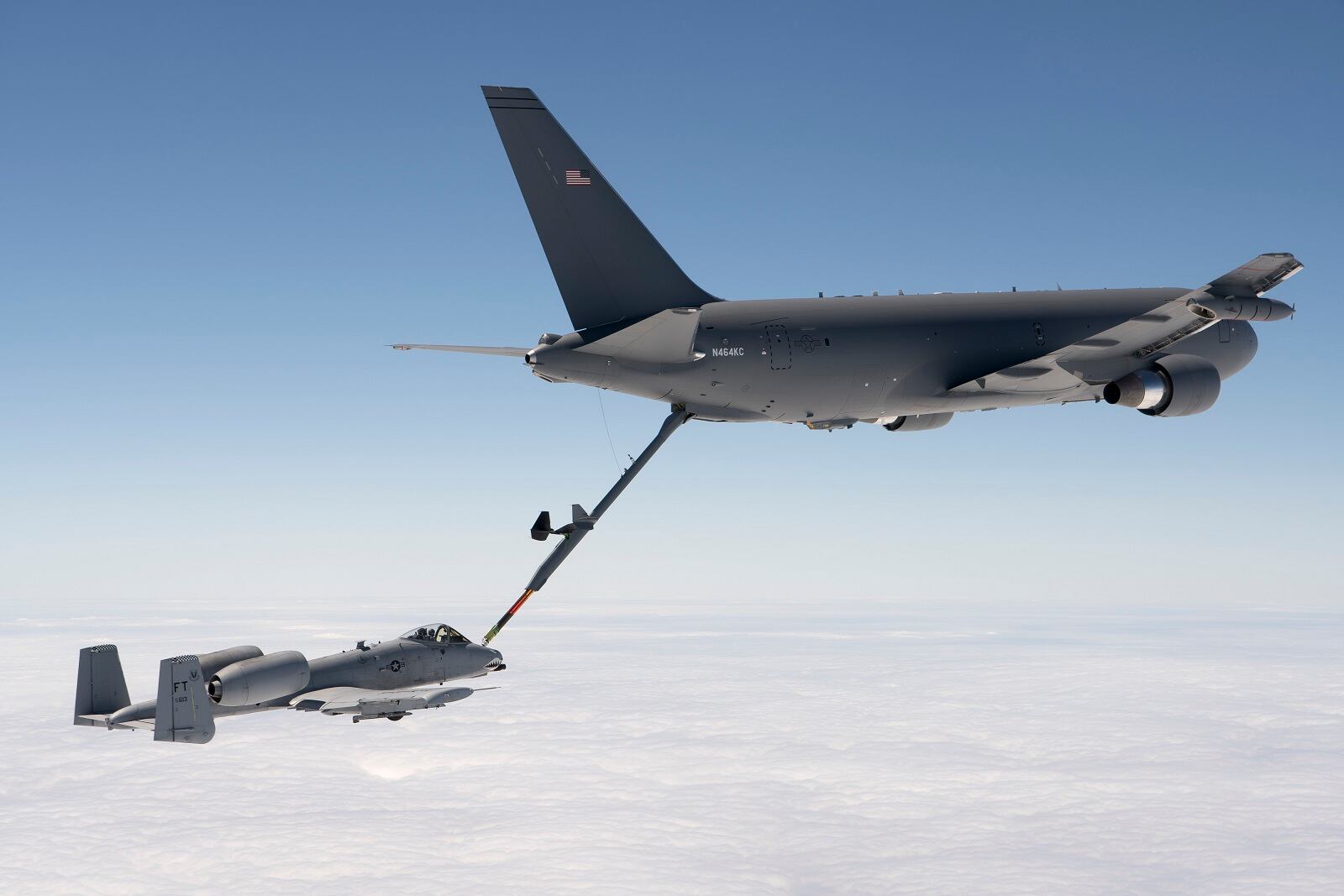The first KC-46A Pegasus arrived at Altus Air Force Base in Oklahoma Friday, launching a new phase in the 97th Air Mobility Wing’s journey to become the Air Force’s formal training unit for its newest tanker.
Altus officials said Friday that the 97th has constructed a new training center, fuselage trainer and hanger extensions since it was chosen nearly five years ago. And to teach hundreds of pilots, boom operators and maintainers each year what they need to know to operate the Pegasus, Altus is relying on a combination of simulators and instruction in the actual aircraft.
Altus is also adding more instructors to teach other airmen how to fly the KC-46, operate its refueling boom and maintain the aircraft.
The KC-46 is able to both receive fuel while airborne and refuel other aircraft on the same trip using its boom, drogue and wing aerial refueling pods. It can carry more than 212,000 pounds of fuel and carry a mixture of passengers, aeromedical evacuation and cargo.
Altus’ second Pegasus, which was also originally intended to be delivered on Friday but delayed due to weather, arrived on Saturday. More KC-46s are expected to follow soon.
The 56th Air Refueling Squadron at Altus, which stood up in August 2016, has nearly tripled its manning in the last few months as it prepared for the Pegasus’ arrival, Maj. Jacob Piriano, the squadron’s operations flight commander, said in a Feb. 6 interview. Those new cadre members will now be trained on how they will teach pilots and boom operators.
Piriano said Altus wants to shake off old thinking as it launches its KC-46 mission, so it brought on a diverse slate of airmen, including air crew members with experience in the B-52, KC-10, KC-135, C-17, RC-135 and E-3 AWACS.
“The diversity of that robust instruction experience is what’s going to make our [flying training unit] so good, so quick,” 97th Wing Commander Col. Eric Carney said, though he would not comment on how many instructors are there.
Altus has also stood up a maintenance flight — the first all-civilian maintenance unit to accept a new aircraft — specializing in the KC-46, said Donnie Obreiter, the maintenance flight chief for the KC-46. The wing plans to pull mechanics from sister flights there that work on the C-17 and KC-135, and put them to work on the Pegasus, he said. But it’s too soon to say what kind of mechanics they’ll need, and how many, he said.
RELATED

Obreiter said the program has looked at legacy systems to find ways to improve their processes and make them more efficient.
While the quality of maintenance doesn’t differ whether it’s a civilian or a uniformed person, Carney said that having civilian maintainers does provide more continuity at the base because they don’t deploy or transfer.
But while the simulators are now in their infancy, Piranio said, they will take on increasing importance as they mature. Airmen training on the KC-46 at first will have about the same balance between simulator training and time in the actual aircraft as C-17 and KC-135 training. But as the simulators get better and truer-to-life, he said, the wing will shift dramatically towards more time in the simulator and less in the aircraft.
This will reduce flight hours and wear-and-tear on the aircraft, and extend its life even longer, he said. Piranio said it’s hard to estimate what the balance will be, but the preponderance will be in the simulator.
“We want the absolute most of every minute of training inside the airplane," Carney said. "We’re trying to give the students as much contact time to practice and be ready themselves, so first they get the most out of the sim as they can, and then they get the most out of every time they take the airplane airborne. We’re trying to wring out as much ... out of every training medium, to get the student ... as much as they possibly can out of every sortie.”
The 56th is using a combination of full-fledged simulators as well as simplified computer sims called part-task trainers, Altus said in a release last week. Those part-task trainers, which include multiple digital screens that seek to recreate the cockpit of a KC-46, allow airmen to run through checklists and hone their skills without using the large simulators, which can get booked up and result in delays.
Part-task trainers also save money, Altus said, because they don’t need traditional maintenance or repair the way simulators do.
Stephen Losey is the air warfare reporter for Defense News. He previously covered leadership and personnel issues at Air Force Times, and the Pentagon, special operations and air warfare at Military.com. He has traveled to the Middle East to cover U.S. Air Force operations.




